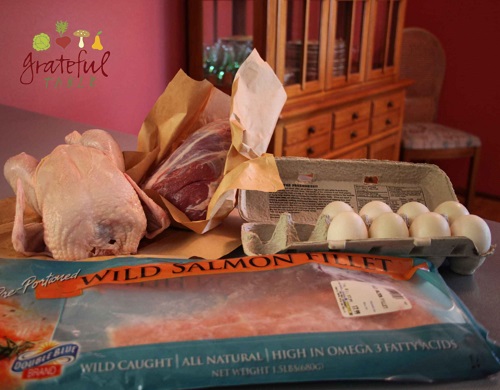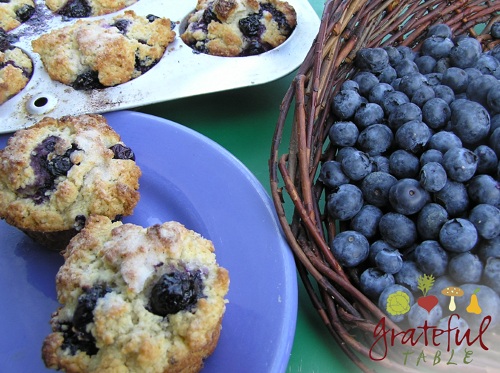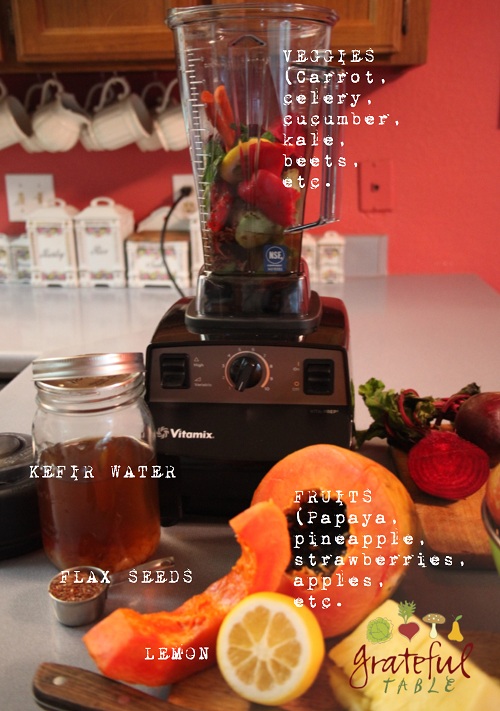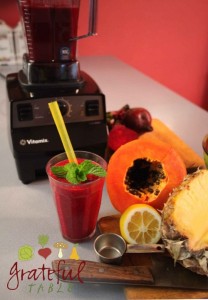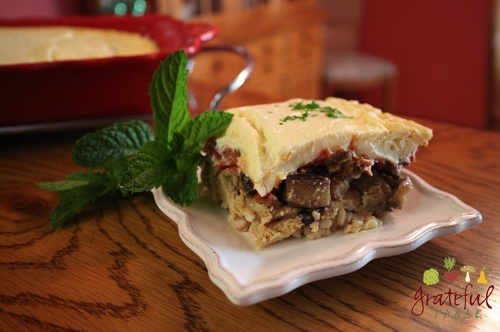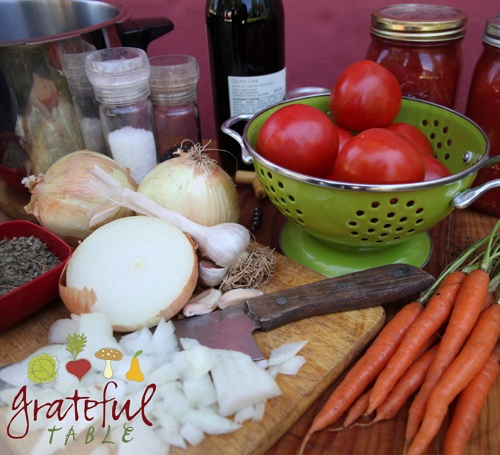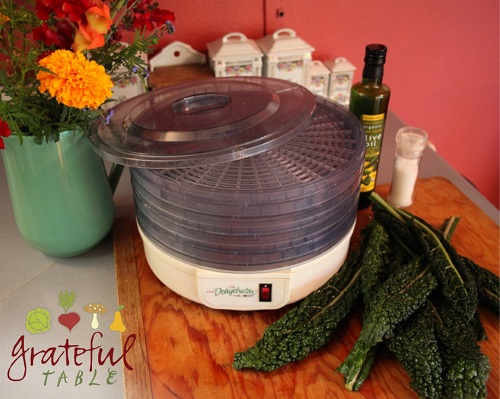The Pesto Torta holds up well for big events, keeping at room temperature for hours. It can be assembled the day before, and the pesto can be made ahead of time, as it stores well in the freezer. Serve with crackers or sliced baguettes, and if there happens to be any left over, it will keep for a week or so. Serves 40 or more.
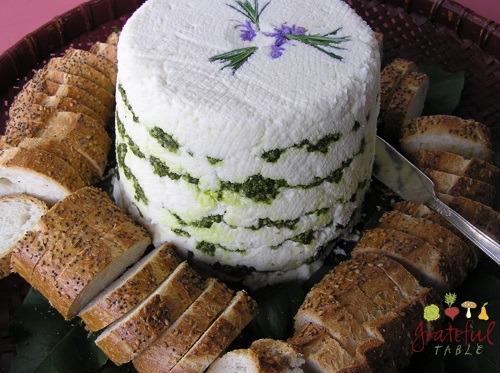 INGREDIENTS
INGREDIENTS
- 4 c. fresh basil leaves (12 oz.)
- 1 1/2 c. olive oil
- 3 to 4 c. fresh spinach
- 1/2 c. fresh garlic cloves, peeled
- 1 c. pine nuts
- 2 c. Parmesan
- 1 lb. butter, room temperature
- 1 lb. cream cheese
- 1 c. pesto
- 1-2 baguettes, sliced thin (or crackers)
Pesto
Take advantage of fresh basil in its prime in late summer. Portions of the pesto mix can be frozen up to six months. Add pesto and grilled veggies to pasta for an easy meal, or use on pizza, or for the Pesto Torta recipe that follows. Makes approx. 2 lbs. (4 c.).
1. Process the following: > 4 c. fresh basil leaves (12 oz.) > 1 1/2 c. olive oil > 3 to 4 c. fresh spinach
2. Add and process again: > 1/2 c. fresh garlic cloves, peeled
3. To the above, add and process: > 1 c. pine nuts > 2 c. parmesan
4. Store 1/2 c. portions of this in the freezer, or a week or so in the refrigerator. If refrigerated, a thin layer of oil on top, or a piece of plastic wrap pressed against the surface, will preserve the color.
Pesto Torta
Pesto is layered between a cream cheese/butter mix. Good on crackers or French bread. 2 1/2 lbs. Serves 20.
1. Use a round, 1/2-gallon-size container for the mold. (A 2-quart plastic yogurt container works well.) Line it with dampened cheesecloth. Use a few herb-leaf sprigs (rosemary, basil, or the like) for garnish, arranging them in the center of the cheesecloth-lined bottom of the container. To assemble, start with a layer of the butter-cream cheese mix on the bottom, about 1/2″ thick. Spread a thinner layer of the pesto on next, continuing until both are used up, ending with the cheese mixture.
2. For the cream cheese mixture, beat the following until blended, on med. speed: > 1 lb. butter, room temperature > 1 lb. cream cheese
3. For the pesto layer, use: > 1 c. pesto
4. Follow directions above for assembling the torta, then let it refrigerate for 1 hour or so before unmolding. To unmold, invert onto serving platter, which can be lined with lettuce. Remove cheesecloth and serve with crackers or thin-sliced baguettes. Can sit at room temperature for several hours.

